How to Know if You Have Active Speakers
Active vs passive speakers: what's the difference? Which is better?
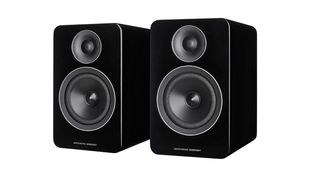
In their simplest form, traditional stereo hi-fi systems consist of a source component, an integrated amplifier and a pair of passive speakers. Pretty straightforward, right?
Simply if you break down the signal path it can exist separate into a greater number of distinct sections, near of which are lumped together in this uncomplicated prepare-up.
What are passive speakers?
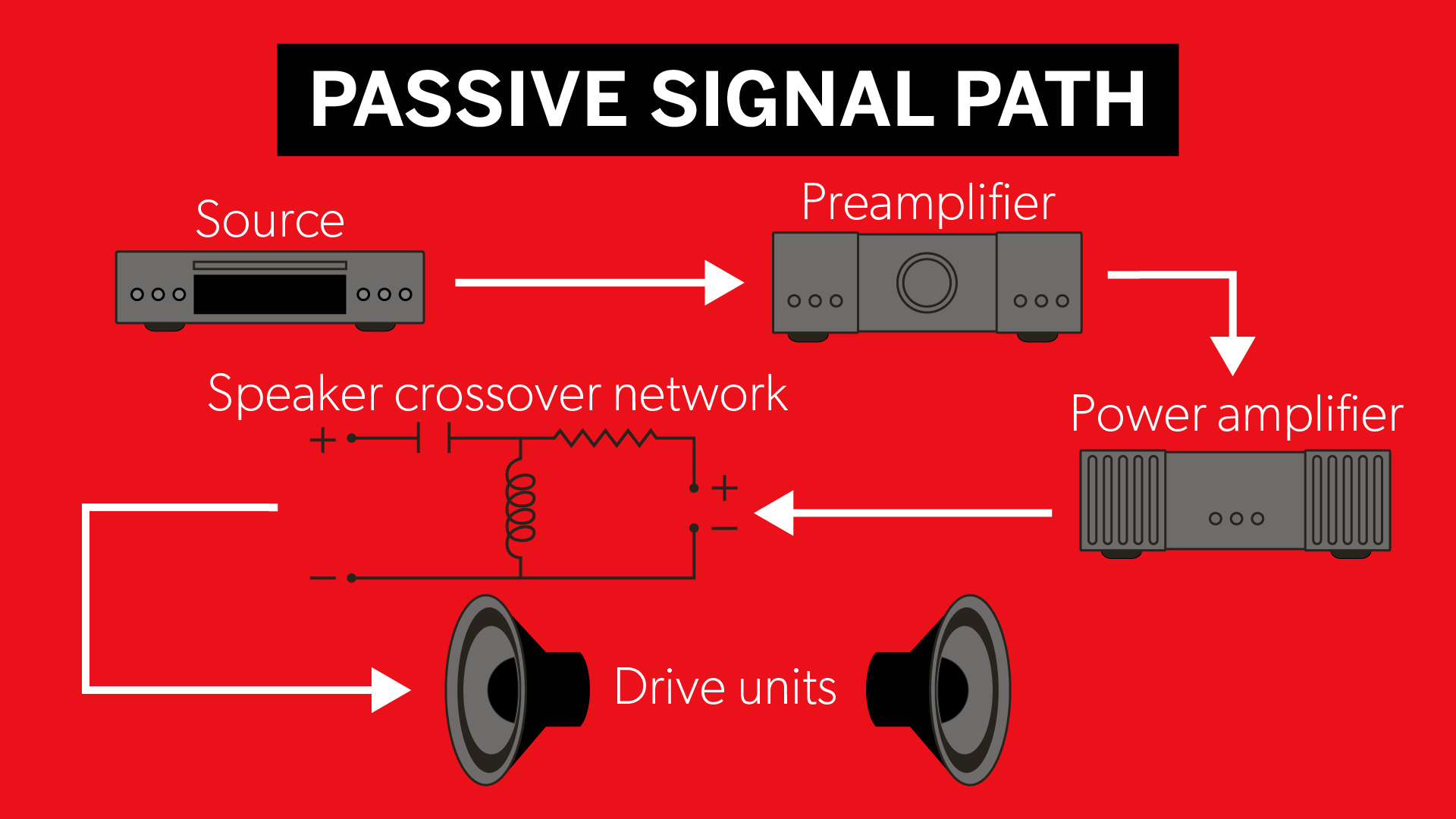
Outset, there'south a source component, which is the slice of kit that plays the music. This can be a CD player, music streamer, record actor or even a computer or phone. Next nosotros have a preamplifier section, this switches between sources and controls the volume level.
If you have a record player, you'll also need a phono stage to increment the output from your cartridge to line level and equalise the signal before feeding it to the preamp circuit (we've omitted the phono phase from our diagram to go on things simple).
Now you need muscle, something that can take the line-level indicate from the preamp and increase it plenty to drive a pair of speakers – say howdy to the power amplifier. However, this isn't directly connected to your speaker'south drive units.
Its output has to pass through a crossover filter network that in a two-way speaker splits the signal into just loftier frequencies (to get to the tweeter) and everything else for the larger mid/bass unit of measurement.
If you take a three-manner speaker, so the crossover splits the sound upwards into three parts – treble, midrange and bass. This crossover network doesn't demand a power source to work, and in that sense it is considered passive. That'southward more or less the indicate path in a conventional passive fix-up.
- Best speakers 2021: budget to premium stereo speakers
What are agile speakers?
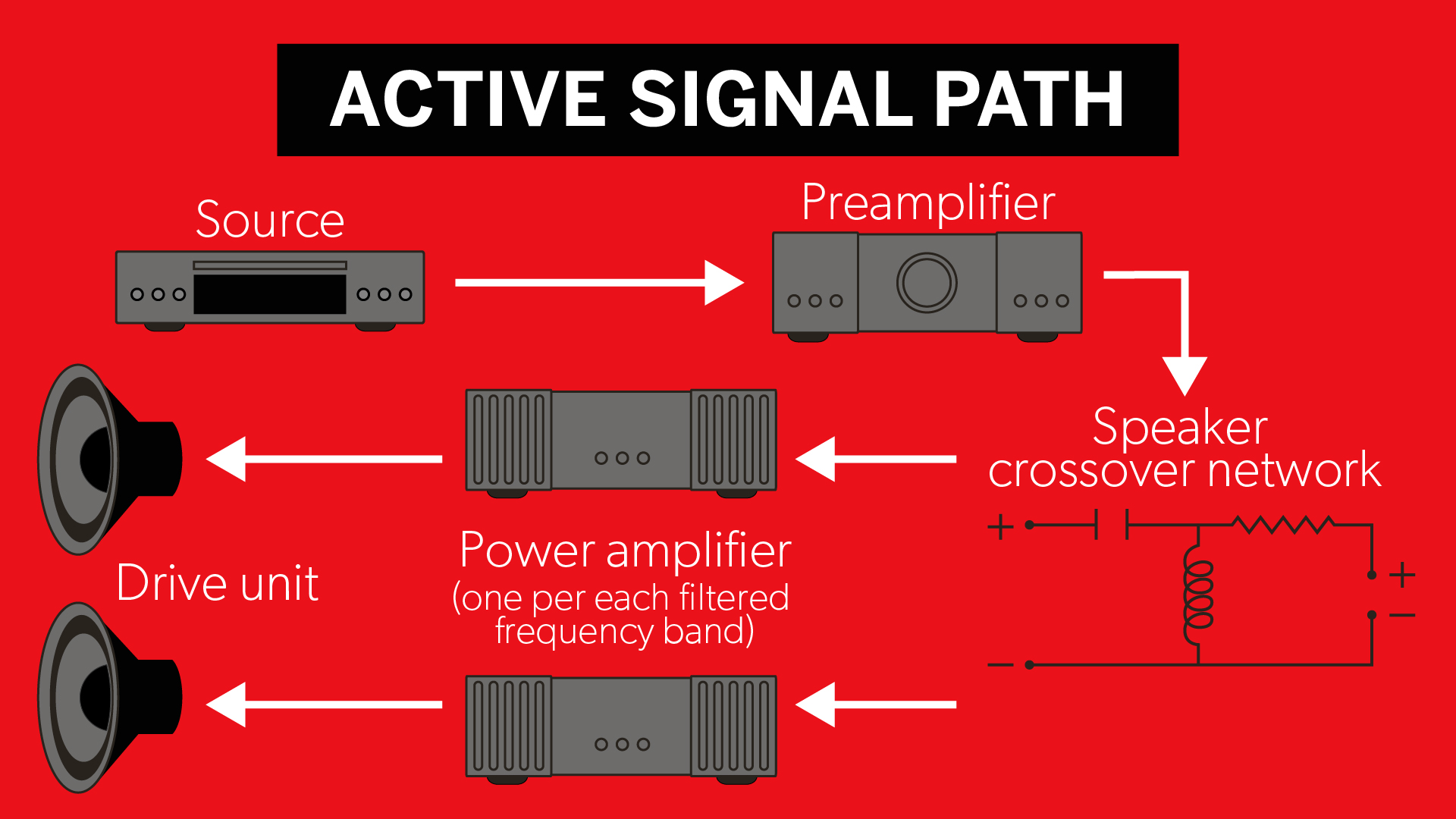
In an agile system things are the same until after the preamp stage. The signal from the preamp goes into an agile crossover network. While this performs the same job as the crossover in the passive set-up it works at line level (around 2v) rather than speaker level (typically 15-35v).
Working at lower signal levels means the components used can exist optimised for precision rather than power handling. Such a pattern would normally use active components, and on more sophisticated products, some form of point processing (whether digital or not) to become the best out of the bulldoze units.
The outcome is a filter network that is (potentially) way more accurate in its operation, and delivers a better integrated and optimised sound.
Each separated frequency band of this line-level signal is then sent to a defended power amp that feeds as many bulldoze units as are responsible for delivering those frequencies.
- Best active speakers 2021
Active vs passive speakers: which is ameliorate?
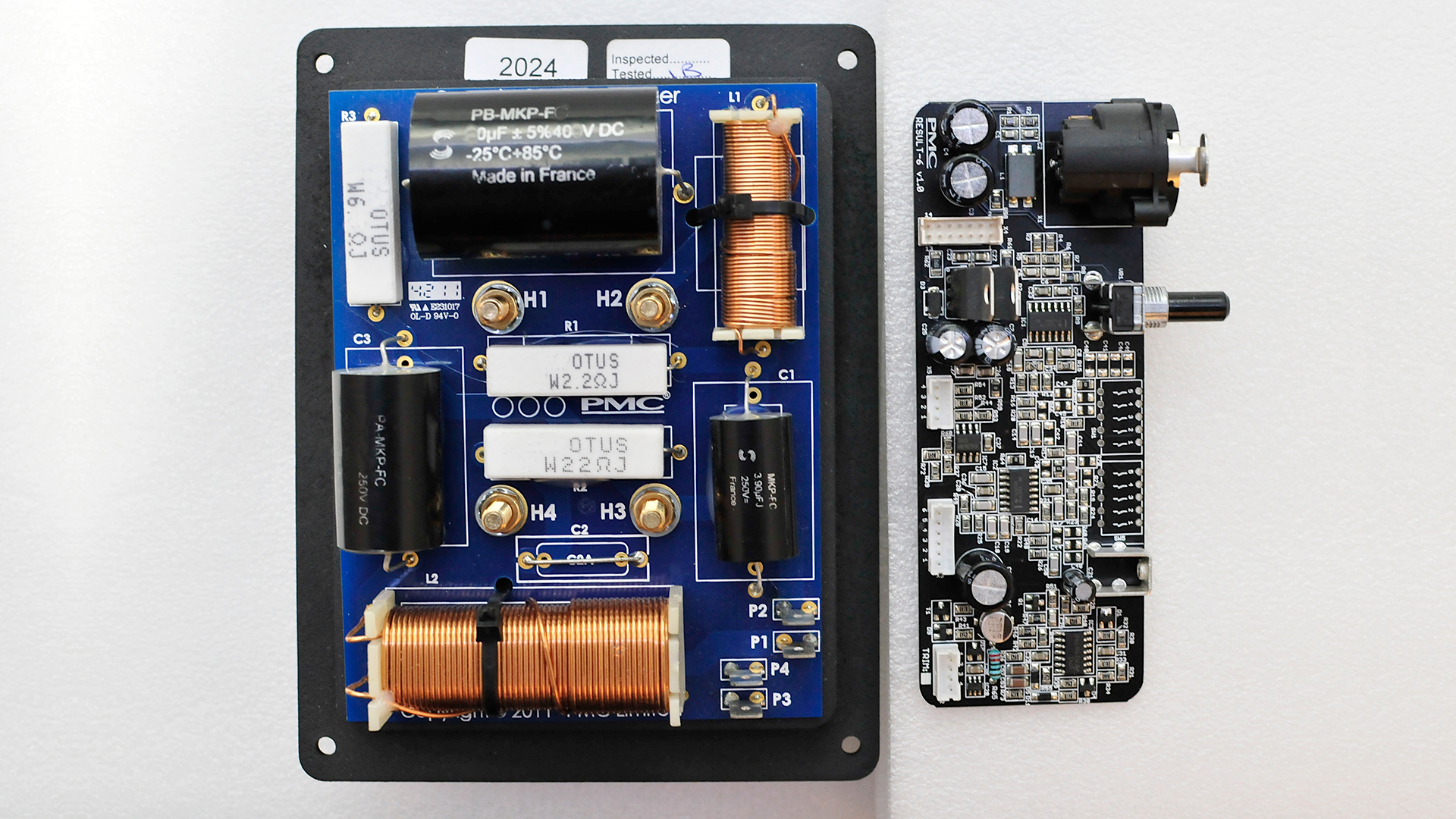
On paper, active speakers have a whole host of advantages. Their crossover design gives the designer much greater command over the bespeak and is far less prone to losses and distortion when compared to a passive filter alternative.
Equally the power amplification is integrated into the design, it can be optimised for a specific drive unit. Because it'south normally built into the box, at that place'due south no demand for long lengths of speaker cablevision between the 2, avoiding any distortion or loss caused past the wires. Just put, there'southward more grip and better command.
These benefits would seem to requite agile speakers a generous border, but in that location are also downsides. There aren't many speaker manufacturers that can make amplification, so the usual path is to buy in modules from an OEM supplier. There's nothing wrong with this in principle, but things often fall short when it comes to implementation. The consequence is that the audio performance of the last active speaker is rarely equally expert equally it could be.
Agile speakers suffer in terms of perceived value on the store floor too. Their electronics tend to be subconscious, even so there will be an obvious cost premium over similar-looking passive alternatives. Break down the respective costs and information technology commonly turns out that the agile option is the meliorate value route, as it consists of multiple power amplifiers – a simple two-mode speaker still needs four mono power amps – whereas a passive set makes do with a single stereo amp to piece of work its four bulldoze units.
Active designs also limit the amount of upgrading possible. Yous tin't just change the ability amps, for example, the whole lot has to go. That leaves less telescopic for enthusiasts to mix and lucifer. You either accept the ability amplifier/speaker combination as a whole or yous don't.
And what about 'powered' speakers?
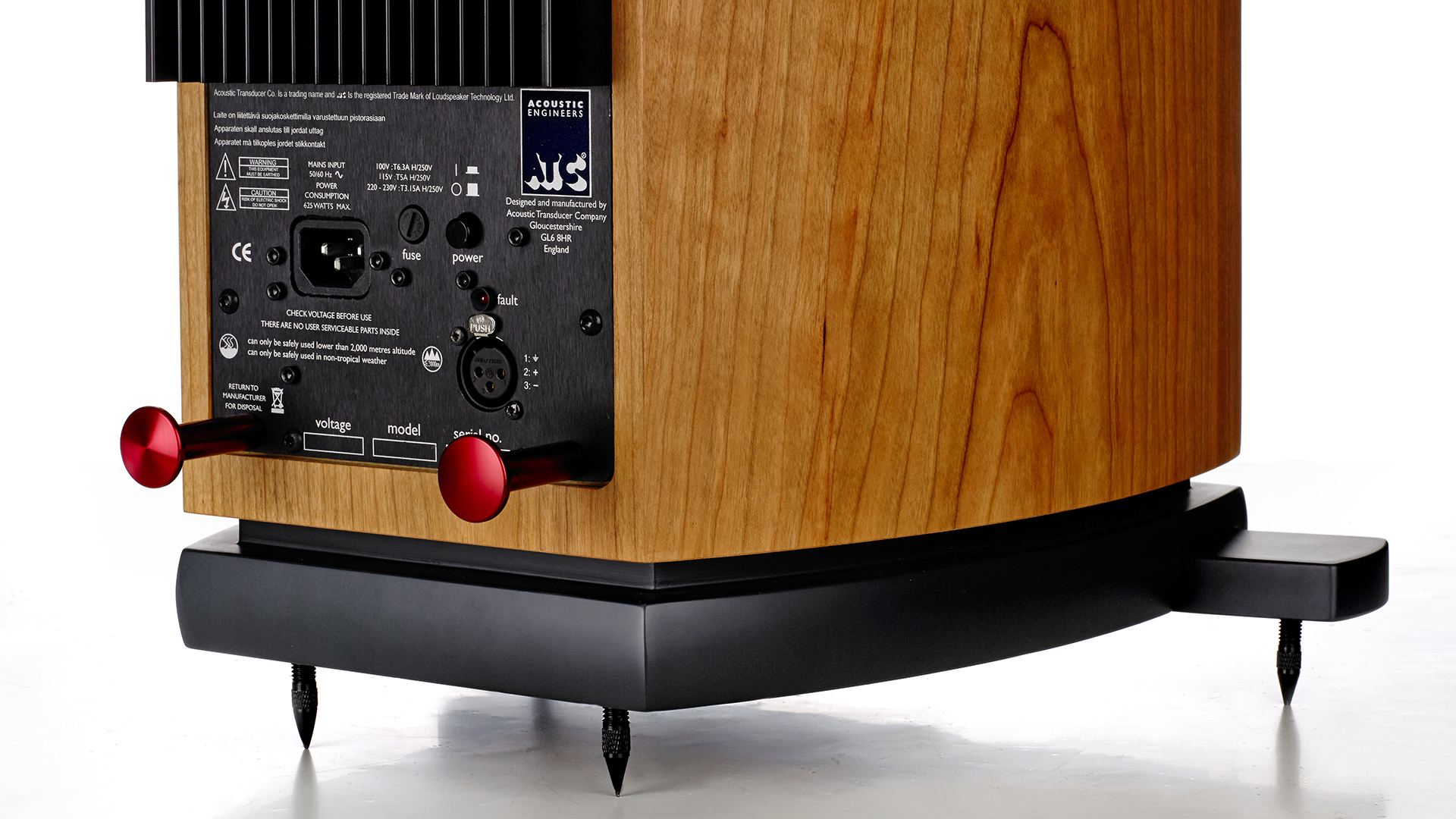
Whereas all active speakers are considered powered, not all powered speakers should be called active.
The divergence is that a powered speaker has the aforementioned signal path equally a passive set-up, merely the amplification (often both pre and ability amp) is hidden in one of the speaker enclosures. There will as well exist a speaker cablevision link between the main speaker (that has the amplification) and the slave (passive) partner.
Near affordable powered models tend to employ such a configuration. Such an approach has some of the neatness of truly active operation but few of the technical benefits.
- Standmounts vs floorstanders: Which speakers should you buy?
- Best turntable speakers 2021: top speakers for your record player
How virtually active speakers with streaming?
While active speakers take clear performance benefits, their conciseness too means they are attractive to users looking for a more than unimposing and meaty fashion to listen to music.
Increasingly nosotros are seeing active speakers that aim to pack in even more functionality into their cabinets – non merely distension simply besides streaming modules and physical connections – creating a complete 'all-in-one' organization that minimises the demand for extra boxes or cabling. With features similar preamp capabilities, digital and analogue inputs, Bluetooth and wi-fi streaming compatibility combined directly into active speakers (or a pocket-size accompanying box that then communicates with them), they offer a neat, compact, minimal fuss alternative to a system of separates. The price can work out more favourably than ownership everything separately, as well (although you shouldn't necessarily expect the same operation from them every bit you would a similarly priced drove of class-leading separates).
Some active speakers with streaming like the KEF LSX, KEF LS50 II and B&Due west Germination Duo are fine examples of such all-in-1 stereo speaker systems, whereas others like the Dali Rubicon two C or the new Beolab 28 come up with replaceable connectivity modules (or 'hubs') that handle the source side of things, significant they can be easily upgraded. After all, unlike speaker applied science, streaming technology is anything only timeless.
- All-time hi-fi systems 2021: micro, hullo-fi, vinyl
- How to build the perfect hi-fi arrangement
Source: https://www.whathifi.com/advice/active-vs-passive-speakers-whats-the-difference-which-is-better
0 Response to "How to Know if You Have Active Speakers"
Post a Comment